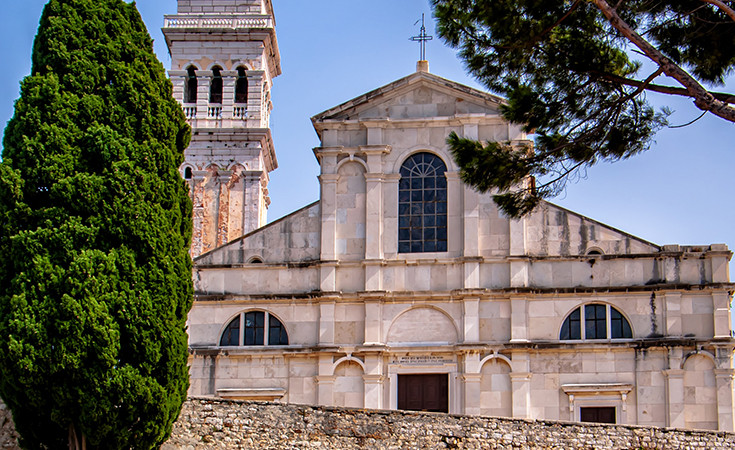
The Church of St. Euphemia is one of the most famous monuments and sights in Rovinj. At the place where the church is today, there used to be a much smaller church dedicated to St. George. A new and larger church began to be built on this place in the 1st century. Although larger than before, over time it was necessary to upgrade, mainly due to the wishes of the population of Rovinj. The church was upgraded from 1725 to 1736.Today, the church has three floors with a series of chapels from the side, and the chapel in the middle is much larger than the others. Along the north wall of the church there is a path leading to the old bell tower, and along the west wall there is a place for the choir and organ that are raised above the main entrance to the church.
There are three altars in the church, the main one being St. George. The north altar is the altar of the sacred mysteries and the south and the most important is the altar of St. Euphemia. In addition to these three altars in the church there are eight other side altars: the Altar of St. Michael the Archangel, the Altar of St. Peter the Apostle, the Altar of St. Francis of Assisi, the Altar of Our Lady of the Rosary, the Altar of St. Roch, the Altar of St. Sebastian, the Altar of St. Nicholas of Bari and the Altar of Our Lady of Mount Carmel.
On the outside of the church, parts of the adjustments are visible in order for the inhabitants of Rovinj to fulfill the wish for the church to expand. The side facade of the church greatly emphasizes the baroque way of work of the architect Simin Battistella, who failed to complete the western facade of the church. The main facade was completed in the 19th century, and the engineer Depoza was in charge of the project, who tried to connect the bell tower with the church in the best possible way. At first glance, it is quite clear that the church of St. Euphemia is one of the best examples of Baroque construction in Istria.
The legend of St. Euphemia
During the reign of Emperor Diocletian, there were many exiled, imprisoned and killed Christians, and among them was the young girl Euphemia. She was born in 290, and as a fifteen-year-old, she was arrested by Diocletian's army. She did not want to renounce Christianity and because of that she was tortured in various ways, and in the end they threw her to the lions, who kill her but do not devour her body. There is not much information about the life of the saint, but it is certain that she died on September 16, 304.
Author of the article

Ana Lazarević - correspondent for Rovinj
Contact: [email protected]
photo credit: Dirk Goncales Martins